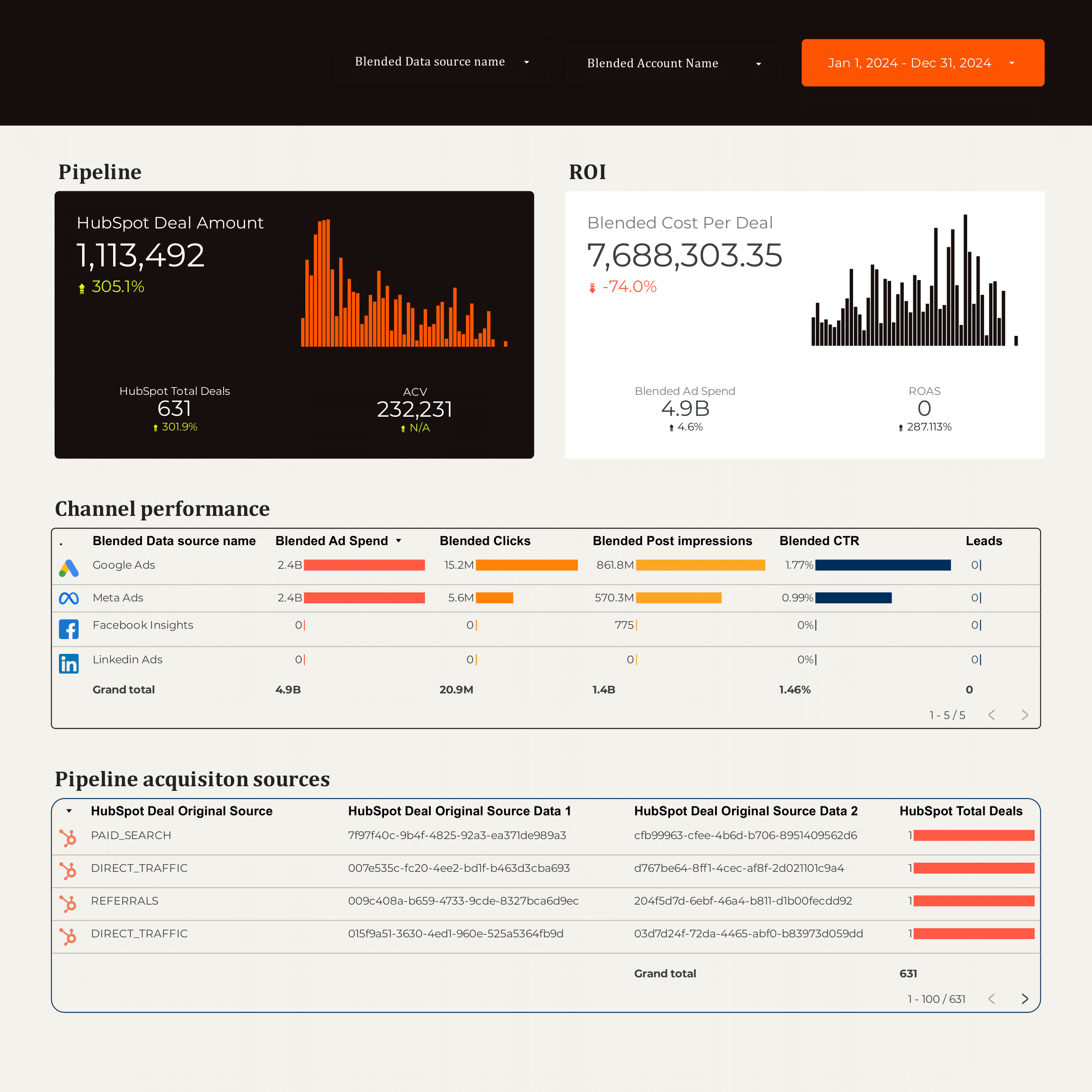
Inbound marketing Report template for Marketing teams and agencies
Optimize your strategy with this Inbound marketing report template. Track KPIs like conversion rates and social media engagement. Analyze data from CRM, E-commerce, Facebook Ads, Google Analytics 4, and LinkedIn Ads. Segment by demographics and timeframes. Ideal for B2B and e-commerce teams to measure performance and achieve marketing goals.
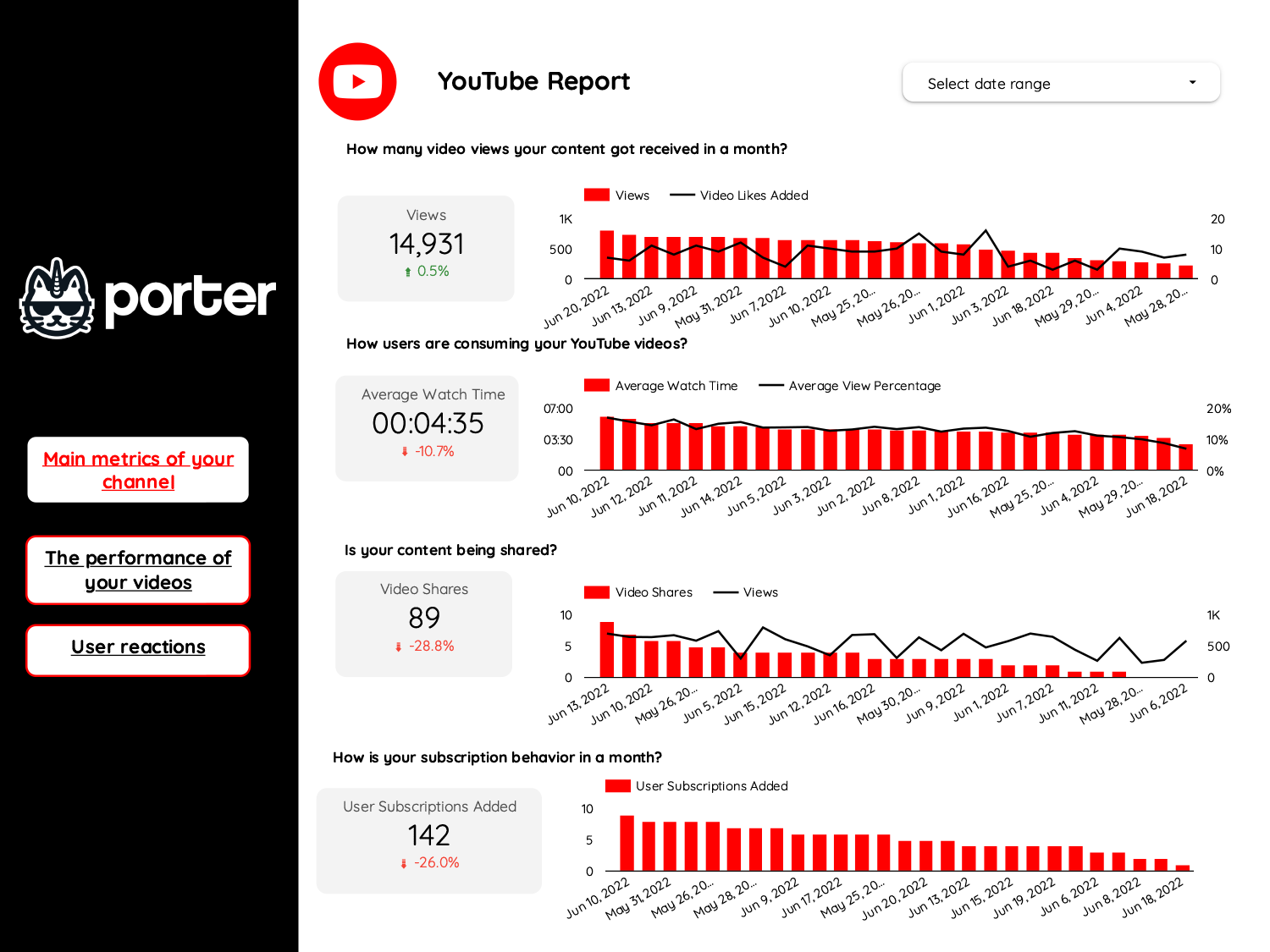
Youtube Report template for Marketing teams and agencies
Optimize your social media strategy with this Youtube report template. Track CTR, conversion rate, CPA, likes, comments, shares, views, watch time, and subscribers. Analyze by audience, age, gender, interests, and time. Perfect for marketing teams seeking actionable insights to enhance performance across advertising platforms and align with SEO objectives.
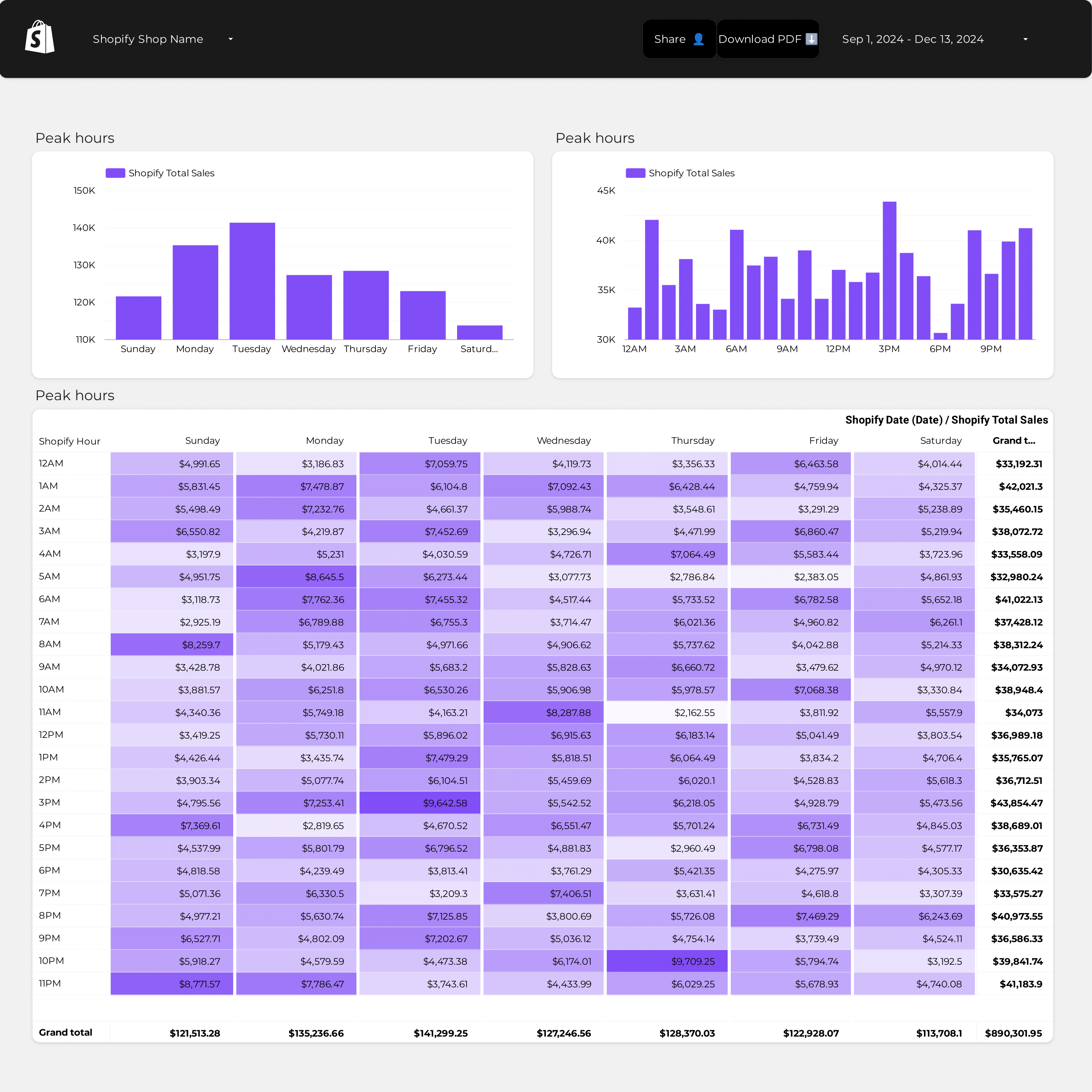
Shopify Store performance Report template for Marketing teams and agencies
Measure key metrics with the Store performance report template. Analyze total revenue, conversion rates, and traffic sources. Segment by audience, marketing channels, and campaign objectives. Consolidate data from E-commerce, Google Analytics 4, Shopify, Google Ads, Facebook Ads, and SEO. Perfect for marketing teams to track performance and optimize strategies.
SEO Serp tracking Report template for Marketing teams and agencies
Optimize your strategy with the SEO Serp tracking report template. Track conversion rates, click-through rates, and customer lifetime value. Analyze keyword performance, demographics, and behavior. Gain insights on competition and ROI. Ideal for marketing teams to consolidate data and achieve specific goals.
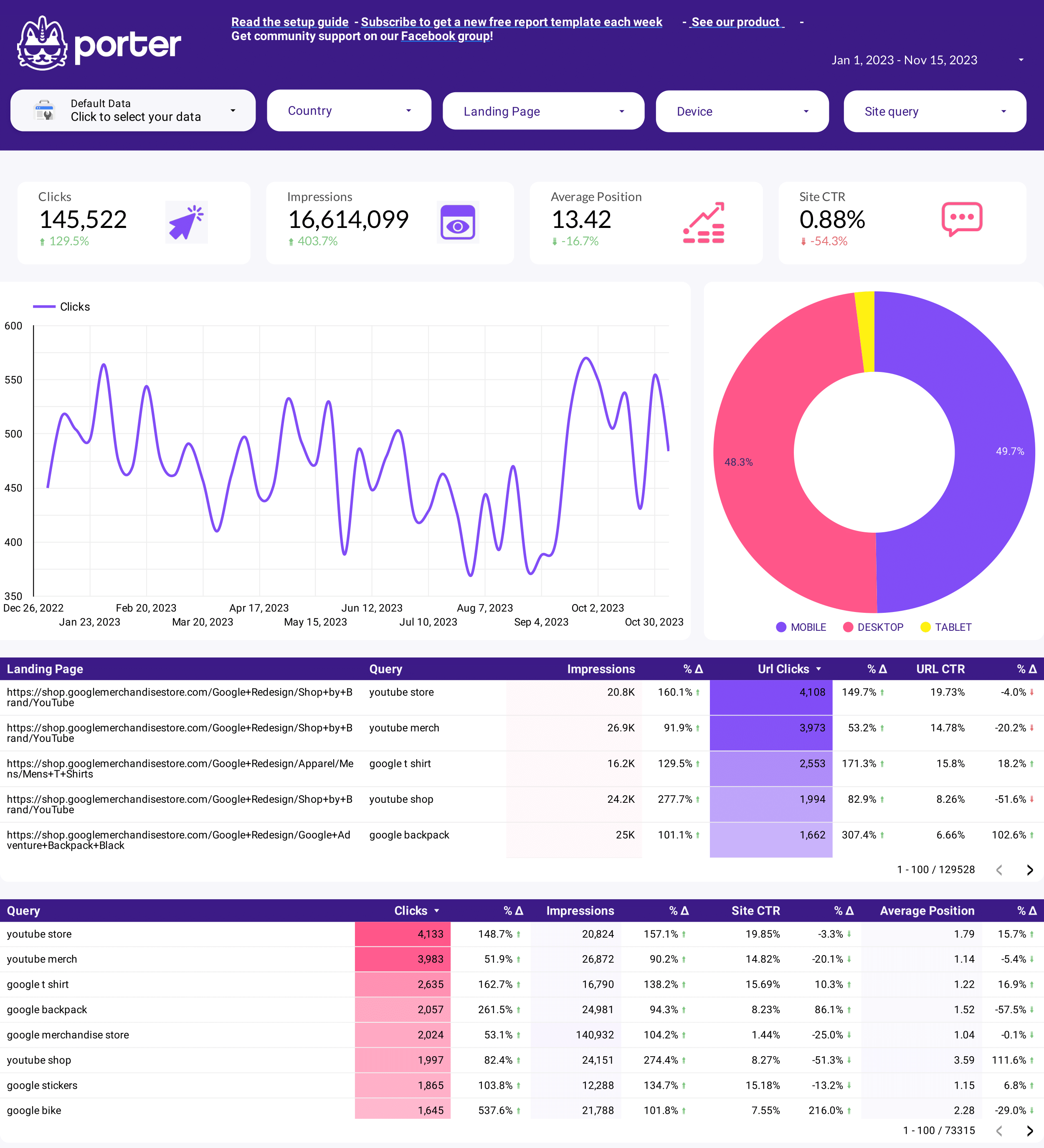
SEO Keyword research Report template for Marketing teams and agencies
Optimize your strategy with the SEO Keyword research report template. Track metrics like conversion rate, cost per acquisition, and organic search traffic. Analyze dimensions such as search volume and keyword difficulty. Segment by demographics and time. Ideal for marketing teams to measure performance and achieve specific goals.

SEO Keyword ranking tracker Report template for Marketing teams and agencies
Optimize your strategy with the SEO Keyword ranking tracker report template. Measure key metrics like conversion rates, ROI, and click-through rates. Analyze organic and paid keyword rankings, demographic insights, and online behavior. Segment data by timeframes. Perfect for marketing teams aiming to consolidate performance insights and achieve specific goals.

SEO Report template for Marketing teams and agencies
This SEO report template helps track key metrics like conversion rate, ROI, and CTR. Analyze organic search traffic and keyword rankings. Segment by audience, channel, or time. Integrate data from Google Search Console and content marketing. Ideal for marketing teams to measure performance and achieve specific goals.
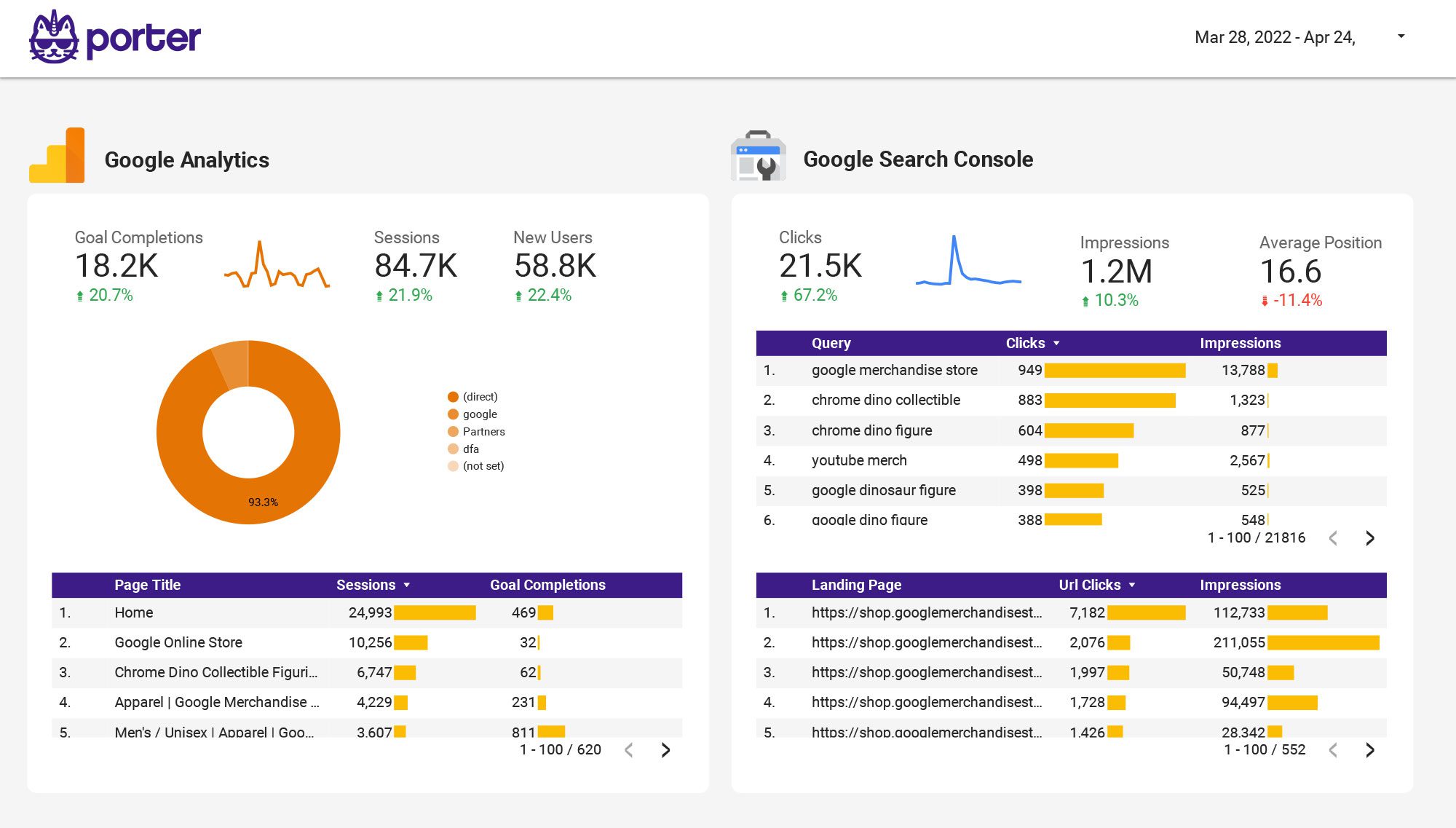
Multi-channel Marketing performance Report template for Marketing teams and agencies
Optimize your strategy with the Multi-channel Marketing performance report template. Track CTR, ROI, and engagement metrics from SEO, Google Analytics 4, Facebook Ads, Instagram Insights, and more. Analyze channel performance and customer engagement by demographics and timeframes. Perfect for marketing teams to measure and improve performance across diverse platforms.

Local SEO Report template for Marketing teams and agencies
Optimize your local SEO strategy with this Local SEO report template. Track CTR, conversion rate, and cost per conversion. Analyze keyword ranking, organic traffic, and local pack visibility. Segment data by demographics, location, and behavior over time. Perfect for marketing teams aiming to achieve specific goals and improve performance.
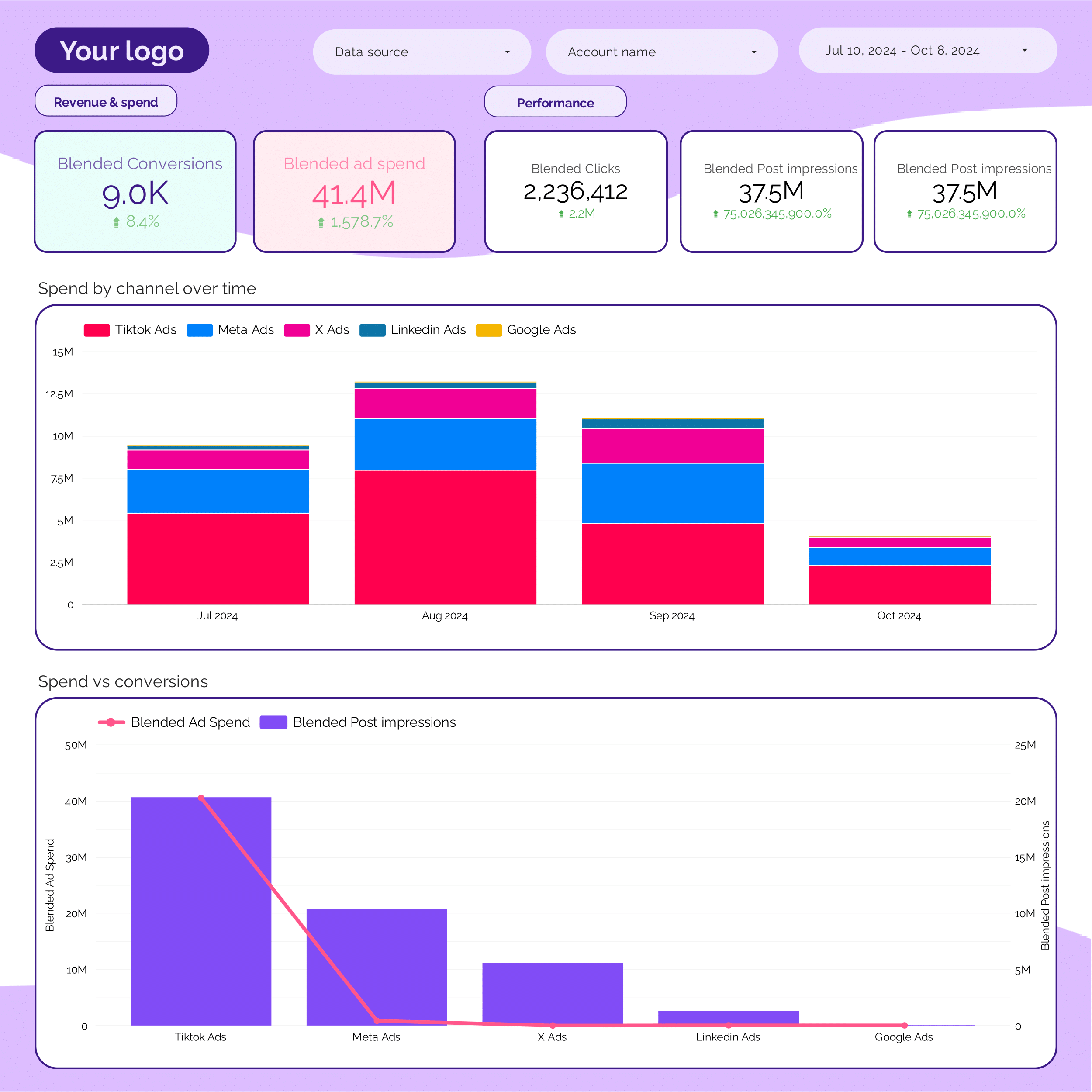
PPC monthly Report template for Marketing teams and agencies
Get the actual PPC monthly on Looker Studio template used by Porter to monitor PPC performance.
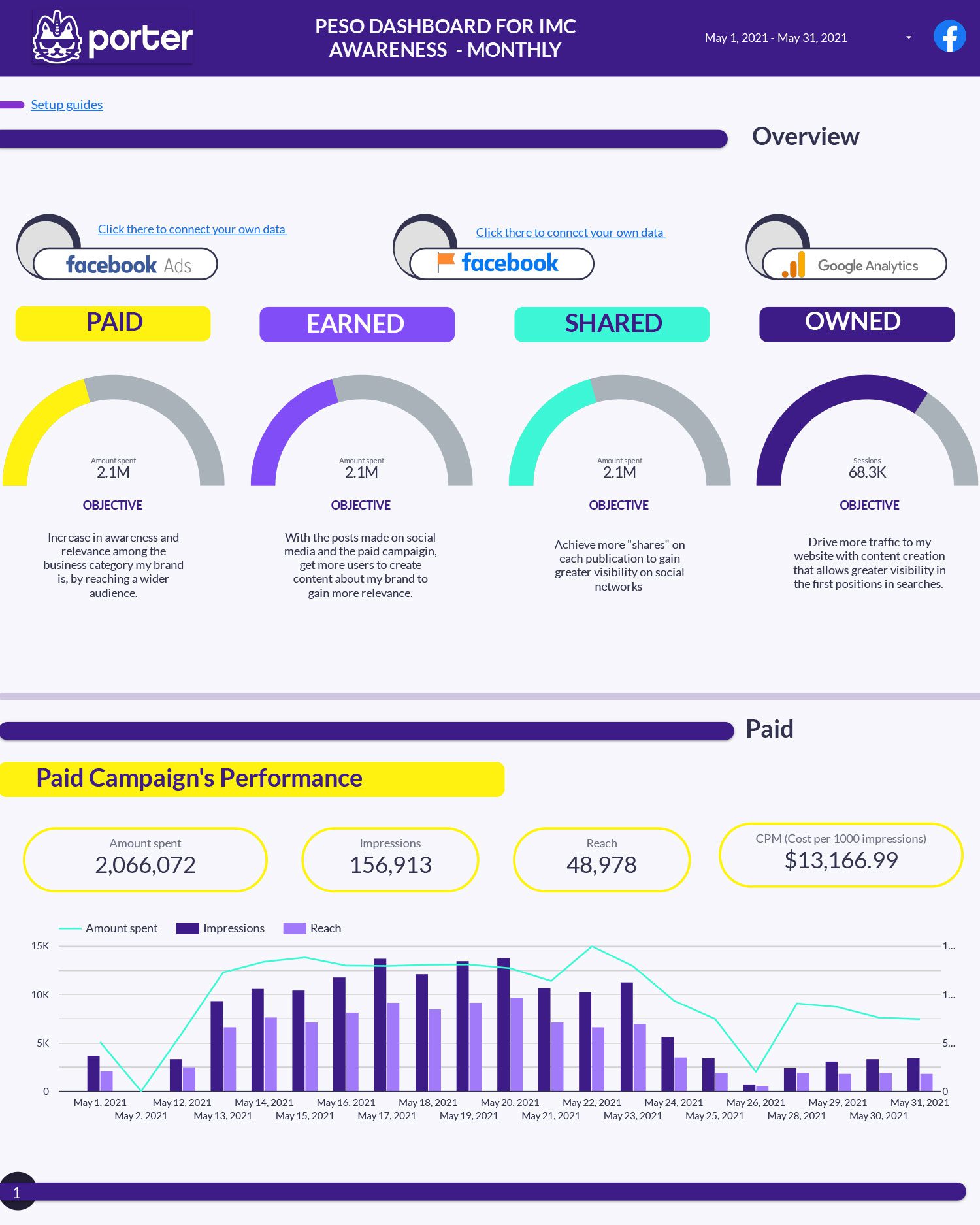
Peso model Report template for Marketing teams and agencies
Analyze key metrics such as leads, conversion rates, and engagement with the Peso model report template. Evaluate campaign performance across Facebook Ads, Instagram Insights, and SEO. Segment by audience demographics and timeframes. Perfect for marketing teams to track e-commerce and social media strategies efficiently.

Google Search Console Report template for Marketing teams and agencies
Optimize your SEO strategy with this Google Search Console report template. Track key metrics like conversion rate, ROI, and CTR. Analyze data by age, gender, device, and location. Perfect for marketing teams to measure performance and gain actionable insights, enhancing your online presence over time.
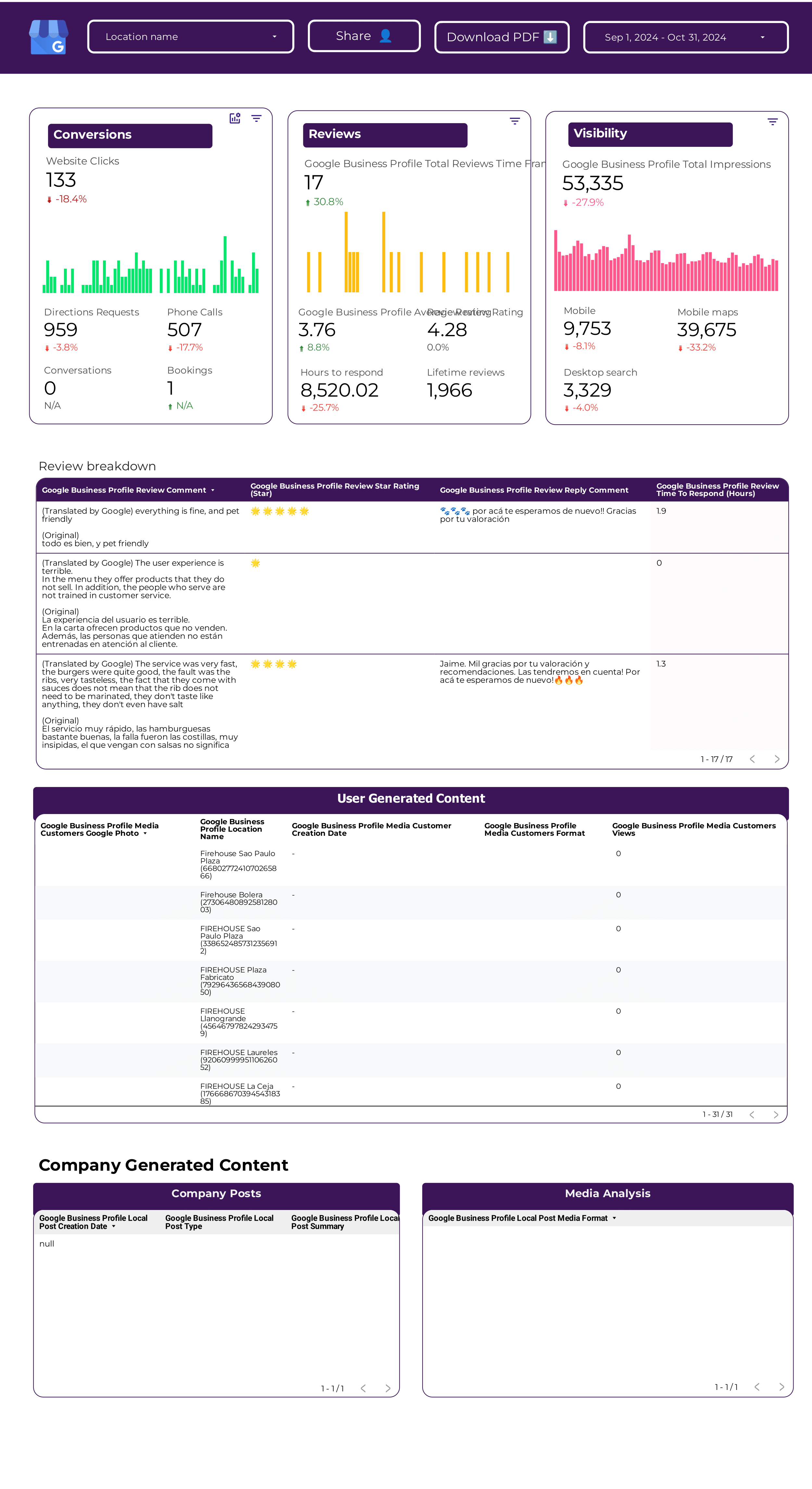
Google Business Profile Report template for Marketing teams and agencies
Optimize your local SEO strategy with this Google Business Profile report template. Track CTR, conversion rate, CAC, clicks, impressions, and reviews. Analyze data by location, age, gender, and time. Perfect for marketing teams aiming to consolidate performance insights and meet specific goals.

DTC Report template for Marketing teams and agencies
Optimize your strategy with this DTC report template. Track revenue, conversion rates, and cost per acquisition. Blend data from E-commerce, Google Analytics 4, Shopify, Google Ads, and Facebook Ads. Segment by demographics, behavior, and time. Perfect for marketing teams to measure key metrics and enhance E-commerce performance.
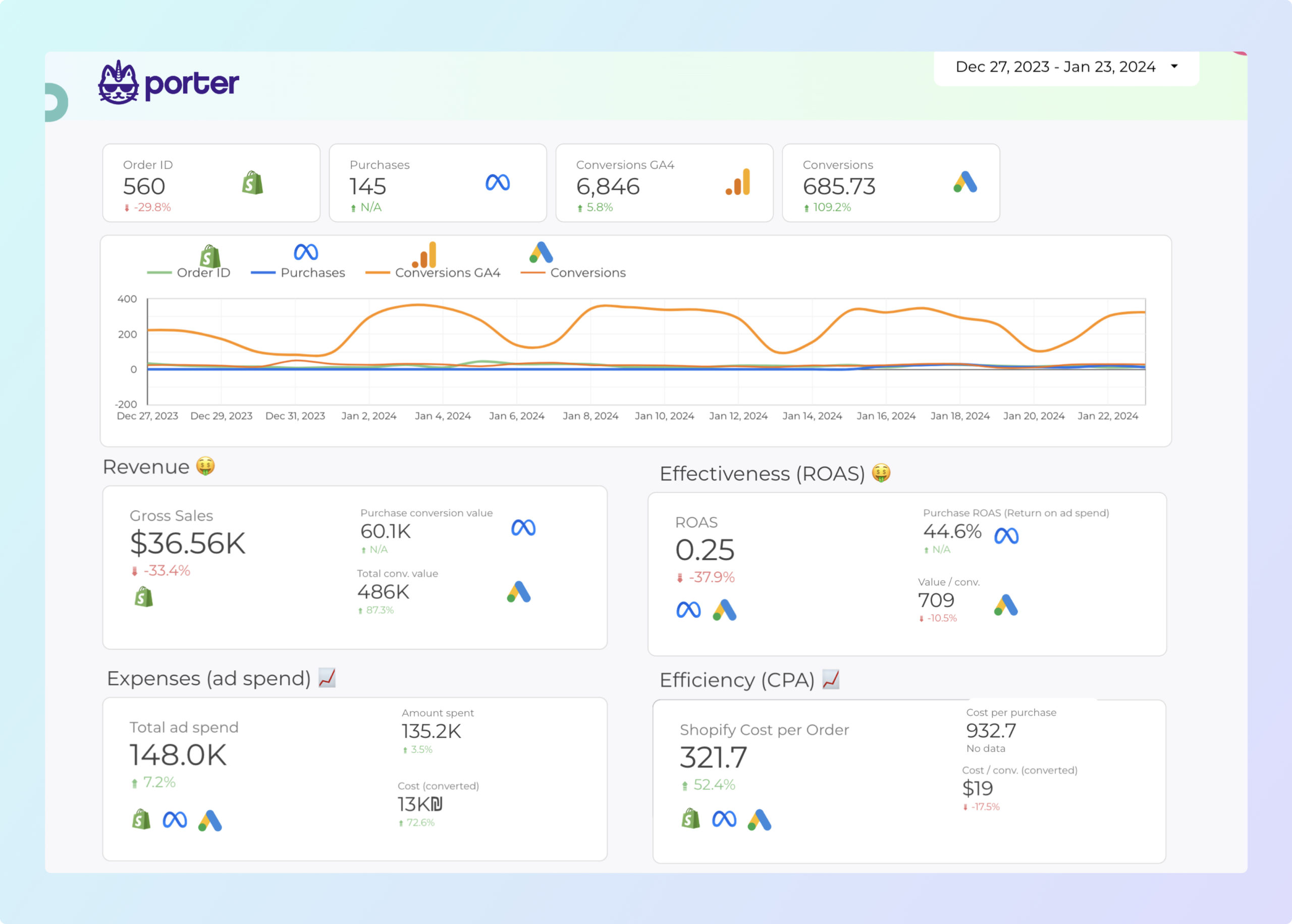
Dropshipping Report template for Marketing teams and agencies
Optimize your marketing strategy with this Dropshipping report template. Measure conversion rates, average order value, and customer lifetime value. Segment by demographics, interests, and time. Consolidate data from E-commerce, Google Analytics 4, Shopify, Google Ads, and Facebook Ads. Perfect for tracking key metrics and enhancing performance in the competitive e-commerce landscape.
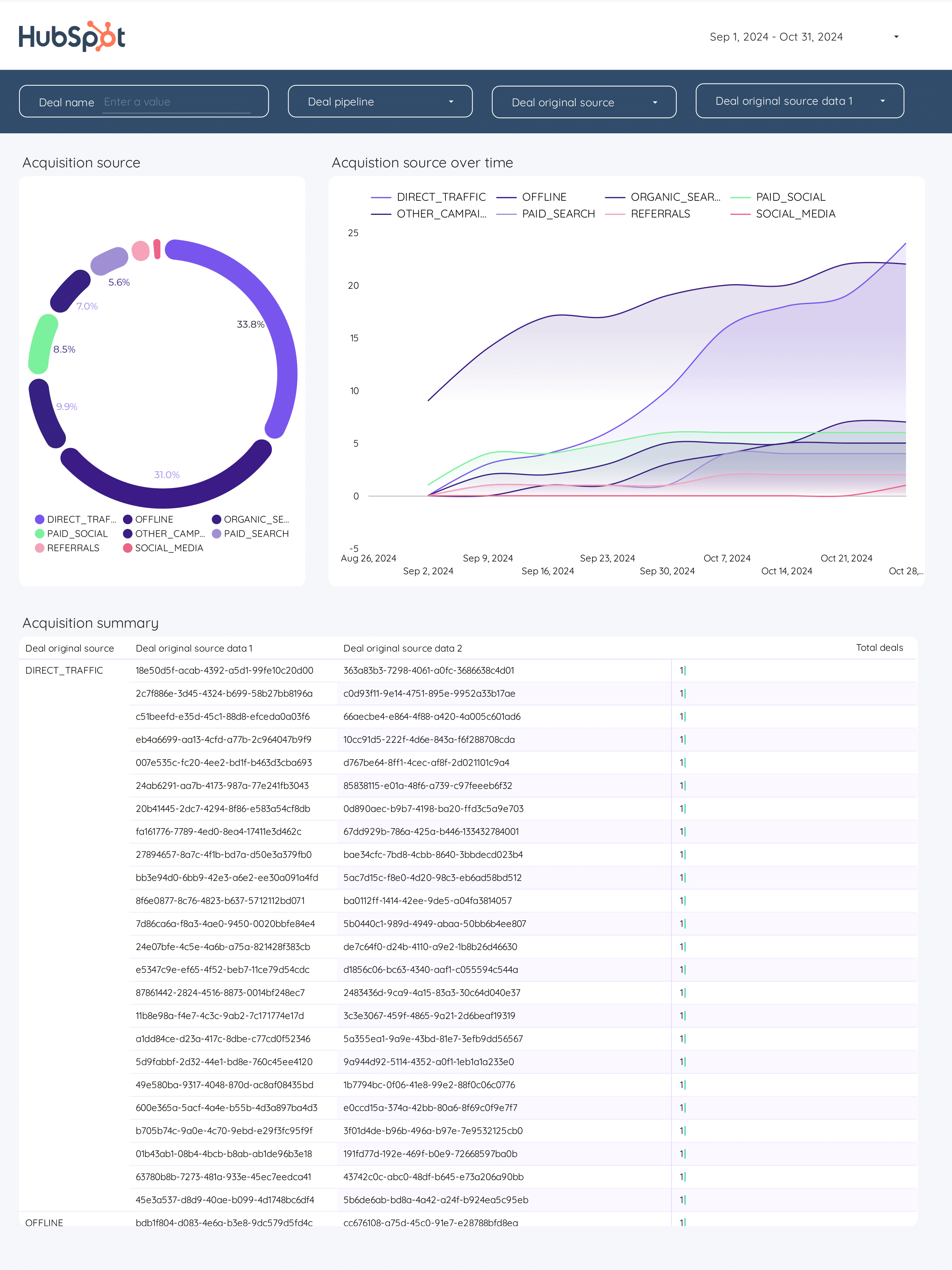
Demand generation Report template for Marketing teams and agencies
Optimize B2B demand generation with this report template. Track conversion rates, cost per conversion, and click-through rates. Analyze social media shares and impressions. Integrate data from CRM, E-commerce, Facebook Ads, Google Analytics 4, and LinkedIn Ads. Segment by demographics and time for strategic insights. Ideal for marketing teams focused on performance.

